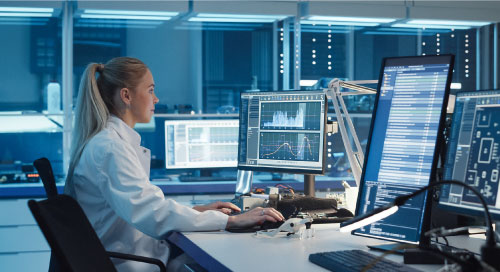Fill form to unlock content
Error - something went wrong!
Your content is just a step away. Please submit below.
Thank you!
AI Integration Platform Delivers a Wealth of Data Insights

When it comes to technology implementations, companies want readily consumable pizzas they can sink their teeth into, not Lego building blocks they need to assemble, says Ken Mills, CEO of EPIC iO, a provider of IoT and AI solutions.
Yes, IoT and AI are revolutionary and can deliver dramatic efficiencies. But the number of building blocks—connectivity, data integration, visualization—to make these technologies work can make any IT team’s heads spin. “Customers aren’t at the technology adoption curve to just figure out AI solutions on their own; they need help,” Mills says.
Developing an AI Integration Platform
EPIC iO helps by making these technologies work for their clients—essentially crafting pizzas for AI and IoT solutions.
The company does so through EPIC iO DeepInsights, a software platform that makes the different technology components work together. DeepInsights is like the crust on the pizza, tying together IoT sensors, AI and computer vision, and connectivity. “We’re bringing the whole stack to the customer so they don’t have to go buy five different other software packages to make these technologies work,” Mill says. EPIC iO is especially useful in delivering context to data, which leads to sharper insights.
To extend the pizza metaphor further, companies can pick and choose the “toppings” (sensors) they want to include, whether those are cameras for video data analytics or connectivity sensors to provide and monitor edge devices.
The advantage of the open #AI + #IoT #software platform is that you don’t have to deliver bespoke solutions every time. @EpicIO_Tech via @insightdottech
A Template for Democratizing AI
The advantage of the open AI + IoT software platform is that you don’t have to deliver bespoke solutions every time. “We’re putting together validated templates so our customers can automate workflows and make more money,” Mills says.
The creation of reproducible AI solutions also democratizes access to the technology by lowering the barriers to adoption. It’s part of EPIC iO’s mission to make the world safer, smarter, and more connected. The cost of AI is decreasing because the cost and performance of the necessary hardware and compute are all improving. These factors also help improve access.
The templated format is especially useful when companies want to focus solely on their strengths. For example, data analytics firm SAS partnered with EPIC iO so they could layer their skills on top of edge data gathered by EPIC iO-installed solutions. “EPIC iO and SAS are a great partnership because we can collect all that data at the edge and generate events and rules through our computer vision and machine learning models and we can then pass that data onto SAS for deeper analysis,” Mills says.
Efficiencies from IoT Analytics
On the other hand, in many cases, companies know they need to improve their processes, but they are not sure if AI solutions will do the trick. A major utility company in California, for example, would dispatch workers to check the fill levels on tanks and follow up if levels were low. After the first pass to evaluate process efficiencies, the company explored installing cameras that would be monitored by humans. But “the person-in-the-loop solution is not very cost-effective or practical at scale, especially when you have technology like AI,” Mills says.
Instead, EPIC iO suggested installing IoT camera sensors and using AI and computer vision to measure fill rates and proactively detect problems. Workers need to visit only when the levels dip. Even better, because of the digital transformation that AI has delivered, the company receives expanded and more useful data that includes how and when the site is being used instead of focusing on the narrow problem of fill rates.
The utilities case is an illustration of how to use AI to solve operational efficiencies. Companies need to ask what problems they haven’t figured out a solution for, and which ones are the most meaningful for their business. “Once you have identified those two vectors, then you’ll probably have a solution where AI can help,” Mills says.
Working With Partners
DeepInsights is built on the Intel® OpenVINO™ toolkit and powered by Intel CPUs and GPUs—providing high-performance computing while keeping power consumption low. The software is also cloud-native and not tied to a single cloud environment. DeepInsights’ portability enables customers to control where their AI-related data is stored and inferenced, which matters for abiding by privacy and data handling regulations.
While EPIC iO delivers easy solutions to customers, the company still works with systems integrators to set up physical infrastructure and ongoing onsite support if needed. Integration with external software programs and establishing operational workflows also fall under the purview of systems integrators.
The Future of Democratized AI
Endless possibilities for AI implementations use computer vision and sensors: A robust posture analysis model, for example, can determine if a hospital patient has fallen in their room so staff can intervene when needed.
Using crowd analytics to monitor retail floor activity is another possibility as is using AI to help improve air quality and safety in cities.
Mills is particularly enthusiastic about using generative AI to make getting insights easier for the average user. Another development he’s looking forward to? The democratization of AI. “I’m really excited that more and more people will be able to take advantage of AI across all industry segments and that it’s not just restricted to the biggest companies and cities,” he says. The democratization of AI is a sure path toward a safer, smarter, and more connected world.
Edited by Georganne Benesch, Editorial Director for insight.tech.